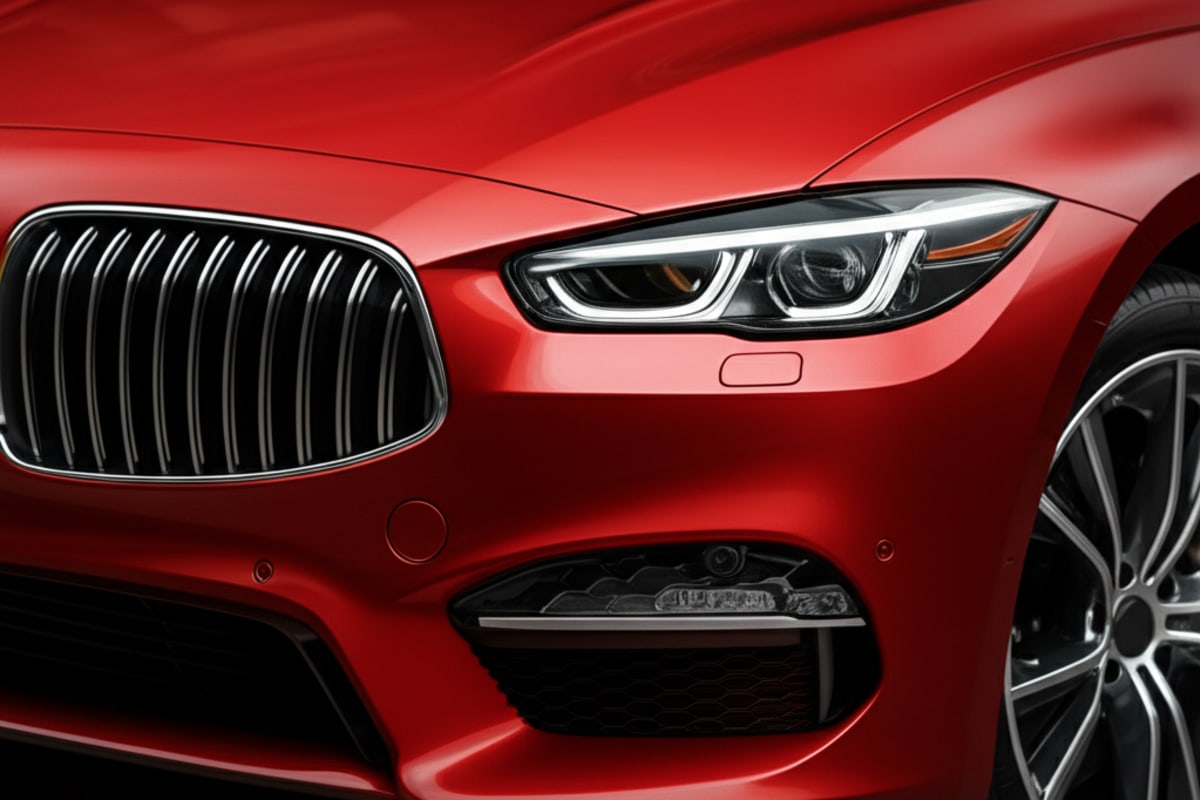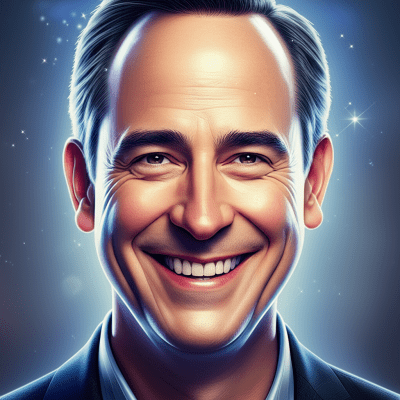Cybercab's Future Shock: Will Tesla's Driverless Dream Need a Steering Wheel?

Remember that sleek, driverless future Elon Musk promised.
The one where you'd hail a Cybercab, slide into a spacious cabin free of archaic steering wheels and pedals, and simply glide to your destination
Background
Well, hold onto your hats – or perhaps, your imaginary steering wheels – because that vision is about to get a rather significant, and surprisingly retro, update
It turns out that even in the most audacious visions of tomorrow, some fundamental elements of today’s transportation might just stick around a little longer than anticipated
Today, as we look towards 2026, when Tesla’s much-hyped Cybercab is slated to roll off the production line, it appears the path to a truly wheel-less future is hitting some serious speed bumps.
In a candid moment that's sent ripples through the tech and auto worlds, Robyn Denholm, chair of Tesla's formidable board of directors, let slip a rather crucial detail during a recent Bloomberg interview: the autonomous vehicle may need to include one of those round, spinny things us lowly humans use to navigate our course in the analog world
It's a statement that has forced a collective pause, making us question the immediate feasibility of completely radical vehicle designs
The Unyielding Grip of Regulation Why the sudden pivot. It turns out those steering wheels aren’t just a convenience; they’re kind of a big deal with regulators.
If Tesla wants to sell a car without one, they’ll need to apply for a special exemption from current federal safety rules.
These rules, often born from decades of automotive evolution and safety incidents, are designed with the assumption of a human operator, complete with hands on a wheel and feet on pedals, ready to take control
Without these, a vehicle is a truly novel entity, requiring extensive proof of safety and reliability far beyond conventional standards.
As Denholm plainly put it, “If we have to have a steering wheel, it can have a steering wheel and pedals
” It's a pragmatic concession, perhaps, but one that undeniably takes some of the shine off the 'futuristic' label.
The regulatory bodies, whose primary mandate is public safety, are not easily swayed by innovation alone
They require exhaustive data, rigorous testing, and a clear pathway for manual intervention in unforeseen circumstances, something a wheel-less design fundamentally precludes
This isn't just about a philosophical debate; it's about the practicalities of emergency braking, steering around unexpected obstacles, or even responding to a vehicle malfunction
Musk's Vision Meets Earthly Reality When Tesla unveiled the Cybercab at a lavish event in Hollywood last year, Musk himself touted the sleek two-seater as the definitive future of mobility
The absence of a steering wheel wasn't just a design choice; it was a powerful statement, intended to convey the absolute seriousness with which Tesla was approaching autonomous technology
This wasn’t meant to be just another car; it was a purpose-built autonomous vehicle, designed from the ground up to be, and only be, self-driving.
No steering wheel meant no way to take manual control – a bold leap into what was pitched as a truly driverless era, devoid of human error or intervention
But here’s the kicker: that bold leap was also a huge risk.
Theoretically, navigating the regulatory labyrinth to get a vehicle without pedals and a steering wheel approved for public roads could take months, if not years
The process involves submitting detailed petitions, conducting extensive crash testing, and convincing lawmakers that the proposed design is at least as safe as, if not safer than, traditional vehicles
A more traditional-looking vehicle, even if designed to be autonomous, could hit the streets a lot sooner
Lessons from the Fallen: The Cruise Origin Saga We’ve already seen how this play can go sideways
General Motors, for instance, tried to get an exemption for its steering wheel-less Cruise Origin shuttles, and ended up twisting in the wind for years
Their ambitious vision for a fully driverless ride-sharing service was repeatedly stalled by regulatory complexities and a lack of clear pathways for approval
Eventually, GM scrapped its plans for the Origin altogether and, following a series of significant safety lapses involving its operational self-driving vehicles – including collisions, unexpected stops, and incidents with emergency vehicles – shut down its entire Cruise operation
It’s a stark reminder that regulators aren't just pushing paper; they’re safeguarding public safety, and they’ve got a long memory for failures and missteps that erode public trust
The lessons from Cruise are critical for Tesla. Public perception and regulatory confidence are fragile.
Any major safety incident, especially with a vehicle that offers no manual override, can set the entire industry back years.
The need for a visible and immediately usable manual control, even if rarely engaged, offers a crucial psychological and practical safety net that regulators are currently unwilling to waive entirely
The Production Cap Conundrum Even if Tesla were to successfully navigate the regulatory maze and obtain an exemption, it would come with a pretty significant catch: the company would only be allowed to manufacture and sell a paltry 2,500 Cybercabs per year
For a company that’s publicly declared its intention to pivot towards becoming an AI and robotics powerhouse, aiming for millions of autonomous vehicles, that kind of cap would put a serious crimp in their ambitious plans
How do you revolutionize mobility, establish market dominance, and recoup massive R&D investments with such limited numbers. It simply isn't a viable path for true widespread adoption.
The US Department of Transportation (DOT), under Secretary Sean Duffy, has previously voiced a desire to streamline the review process for such exemptions, hoping to get more fully autonomous vehicles on the road faster
This indicates a recognition of the potential benefits of AVs
However, Duffy can't simply raise that annual production cap without an act of Congress – and last I checked, none of those guys were even working right now, let alone drafting legislation to fast-track Tesla's dreams
Legislative changes are notoriously slow, especially for complex and potentially controversial topics like autonomous vehicle regulation, where safety concerns often trump innovation timelines
When Personalities Collide: Musk vs.
Duffy Further complicating Tesla’s already bumpy ride is an unexpected, and frankly, rather human, twist: the current dispute between Secretary Duffy and Elon Musk
The two seemed simpatico during a site visit at Tesla’s headquarters in Austin earlier this year, signaling a potential partnership for the future of transportation
But since then, Duffy has been named interim administrator at NASA, and now he and Musk are involved in a rather public tiff over a SpaceX contract
It’s a classic case of personal squabbles potentially derailing critical innovation, leaving us to wonder if the future of mobility is truly at the mercy of a few very powerful, very thin-skinned men
Such high-profile disagreements can have tangible consequences, potentially chilling cooperation between regulatory bodies and leading innovators
Broader Implications for Southeast Asia So, what does this all mean for you, the everyday person hoping for a driverless commute.
It means the future, as imagined, might still be a little further off than we’d hoped
The promise of seamless, autonomous transport is a powerful one, especially in densely populated urban centers across Southeast Asia, where innovative mobility solutions could genuinely transform lives and ease congestion
Governments here are keenly watching the global progress of AVs, learning from both successes and setbacks
For regions like Southeast Asia, which are rapidly embracing smart city initiatives and grappling with immense urban mobility challenges, the Cybercab's journey offers crucial lessons
Cities like Singapore are already pioneers in AV testing, while Jakarta, Bangkok, Manila, and Ho Chi Minh City desperately seek solutions to their perennial traffic woes and pollution
Reduced traffic, lower emissions, improved public transport access, and efficient last-mile delivery services are all compelling promises of autonomous technology for this dynamic region
However, local regulations, while differing from the US, often draw inspiration from international standards and safety precedents
Delays in a key market like the US, driven by regulatory caution and even personal disagreements, can have significant ripple effects.
They can influence global supply chains for AV components, impact technology readiness, and affect investor confidence in autonomous systems worldwide
This could potentially slow the rollout of autonomous solutions that could, for instance, dramatically ease congestion in bustling megacities or revolutionize logistics in vast archipelagos
Policymakers and tech companies across the ASEAN bloc will be closely observing the outcome of Tesla's regulatory battles, as they provide critical insights into the delicate balance between fostering innovation and ensuring public safety
Ultimately, this saga isn't just about American red tape; it's a microcosm of the global struggle between breakneck innovation and cautious regulation.
It’s a powerful reminder that bringing revolutionary technology to market isn't just about engineering genius; it’s about navigating the often-messy realities of regulation, public perception, and even human ego
The Cybercab may still arrive, but it might just be wearing a slightly more familiar face than we originally expected.
